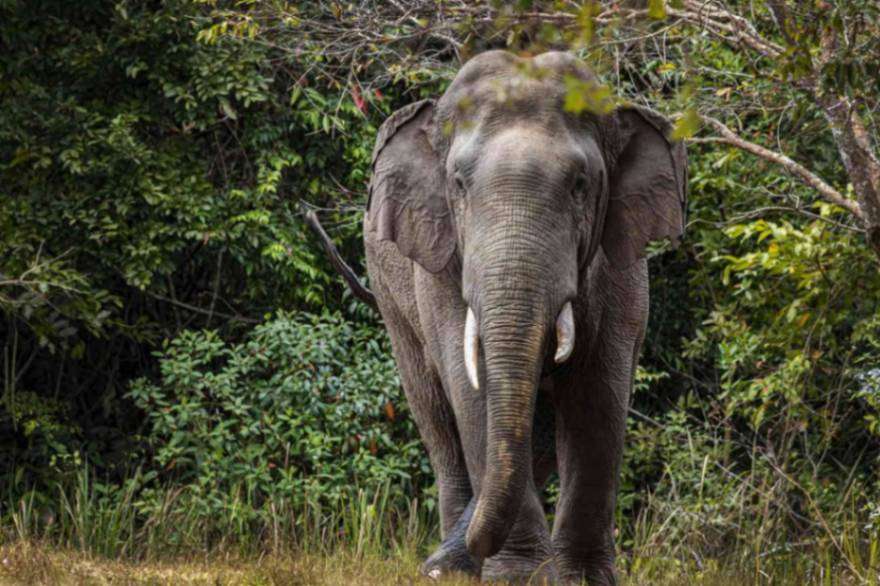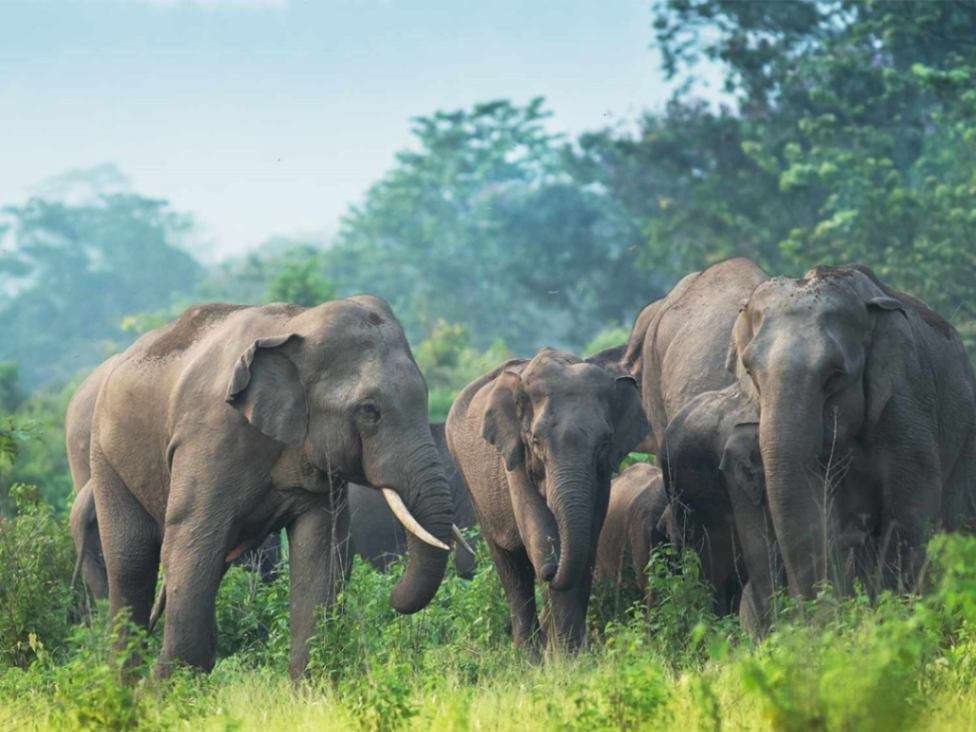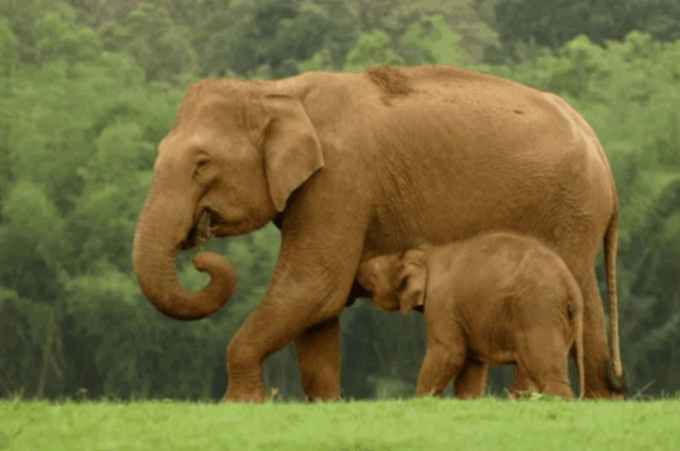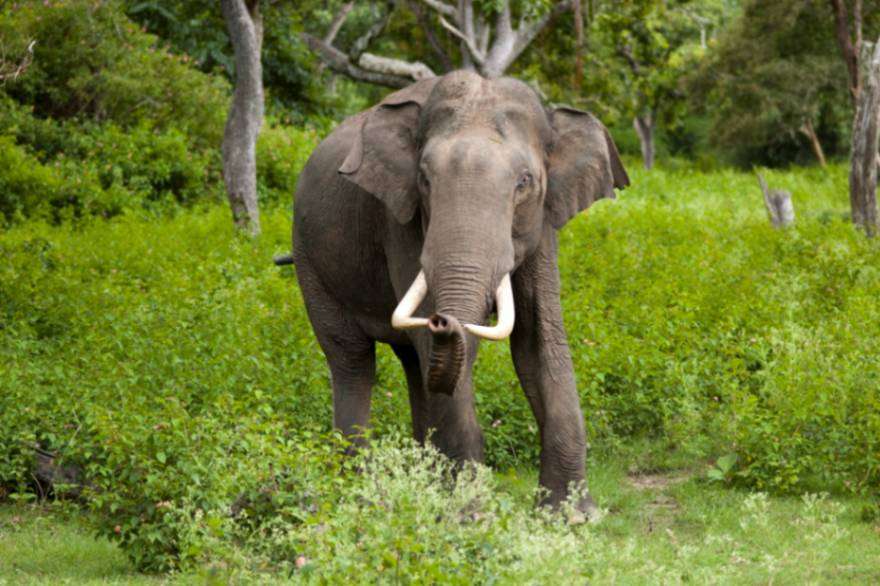The Indian elephant is one of the largest land mammals on Earth and is considered a symbol of strength and wisdom in East Asian cultures.
Although the Indian elephant is important to culture and the natural environment, it faces serious threats from poaching and habitat loss.
For that, the efforts to protect these wonderful creatures are increasing day by day, but more effective measures must be taken to ensure their continued existence in nature.
In this article in TekeTrek Website, we will introduce you to the most important information related to this object. Follow along with us.

The Indian elephant description?
The Indian elephant is distinguished by its huge body, large ears, and long trunk that it uses for breathing and feeding. These wonderful creatures are considered an integral part of the history and culture of India and the rest of Asia. But How do you describe the Indian elephant?
The Indian elephant is characterized by its complex social behavior, as it lives in groups called herds, and enjoys a strong bond between its members.
Indian elephants communicate with each other using a variety of vocalizations and movements, which helps promote communication and understanding among members of this group.
The Indian elephant (Elephas maximus indicus), whose name is in English (Indian elephant), is a species of animal belonging to the Asian elephant and of the same genus.
It has the following classification:
- Phylum: Chordates
- Classification: Mammals
- Order: Proboscidae (Proboscidae
- Family: Elephantidae
- Genus: Asian elephants
- Status: Endangered
Where does the Indian elephant live?
- The Indian elephant is found in a variety of habitats, preferring to live in grasslands and forests, in addition to being found in planted forests.
- The Indian elephant can also be found in various parts of Southeast Asia including Cambodia, the Republic of the Union of Myanmar, Bangladesh as well as Bhutan, Pakistan, Malaysia, Nepal, Thailand and Vietnam. These areas provide the Indian elephant with an abundant number of plants to feed on.
Indian elephant diet
- The Indian elephant is an herbivore. It is a plant-eater. It is known that it eats 330 pounds of food per day. Its diet includes grass, leaves, and bark, in addition to roots and stems.
- In addition, the Indian elephant also feeds on bananas, rice, and sugarcane. It also loves to graze on tall grasses and is known to remove weed shoots with great skill.


Reproduction in the Indian elephant
- It is known that the Indian elephant mates by rubbing their bodies against each other and twisting their trunks together. Males in the age group of 40 to 50 years are likely to mate with females in order to produce young. However, courtship between a male and a female of this elephant is somewhat short-lived.
The most important interesting facts about the Indian elephant
There are many interesting facts about the Indian elephant, which we will learn about together in this paragraph:
- The Indian elephant is the largest land animal in India and is considered a symbol of strength and wisdom in Indian culture.
- The Indian elephant is distinguished by its small ears and distinctive gray skin, and it possesses four tusker-shaped teeth known as “ivory tusks.”
- The Indian elephant is considered a social animal, as it lives in groups called herds, and is characterized by strong social bonds between members of the herd.
- The Indian elephant is considered one of the smartest animals on Earth, as it has a strong memory and the ability to solve complex problems.
- The Indian elephant has the ability to express its feelings and emotions, as it shows a set of behaviors that express its joy, sadness, fear, or anger
- The Indian elephant is considered threatened with extinction, as a result of illegal ivory hunting and the deterioration of its natural habitat.
- India’s elephants are used in various human activities, such as entertainment, agriculture, tourism, religions, and wars.
- Indian elephants travel distances of up to 125 miles per day to maintain their activity while searching for a source of nutrients.
- The Indian elephant spends about 19 hours a day just eating
This information highlights some aspects of the beauty and importance of the Indian elephant as a wonderful living creature and shows the importance of protecting it and preserving its survival in nature.


The most important frequently asked questions about the Indian elephant
The Indian elephant is an amazing and amazing animal, carrying in its nature a lot of mystery and attraction. Since it is considered an integral part of Indian and global culture, there are many questions that might arouse people’s curiosity about this wonderful animal. In this paragraph, we will explore some frequently asked questions about the Indian elephant, and try to shed light on some amazing facts and interesting information about this wonderful creature.
- What is the real name of the Indian elephant?
Elephas maximus indicus.
- How Indian elephant size?
Indian elephant size is two to three meters tall and weighs 2,000 to 5,000 kilograms.
- How much does an Indian elephant weigh?
The weight of an adult elephant ranges from 6,000 to 8,000 pounds. The weight of a baby Indian elephant reaches several hundred pounds
- How tall is an Indian elephant?
The india’s tallest elephant ranges from 18 to 21 feet, including the head, body, and trunk.
- How tall is an Indian elephant?
The height of the Indian elephant ranges from 540 to 630 cm at the shoulder.
- Does the trunk of the Indian elephant contain bones?
No, surprisingly, the elephant’s trunk does not contain bones. Although it includes the upper lip and nose, it is entirely composed of 40,000 muscles, which is approximately 62 times the number of muscles found in the entire human body.
- How much water does an Indian elephant drink during the day?
In hot times, an Indian elephant can drink about 200 liters of water per day.
- What are the most important predators of the Indian elephant?
Bengal tigers are among the most important predators of the Indian elephant. They hunt the young of these elephants because of their size, knowing that the biggest threat to the Indian elephant is humans, as poaching still represents a major threat to it.
- Is the Indian elephant a carnivore or herbivore?
The Indian elephant is a herbivore as it mainly eats plants, feeding on grass, roots, leaves and bark, in addition to stems and buds. It also eats bananas, rice and sugarcane.
- What are the most important differences between african elephant vs indian elephant?
There are many obvious differences in appearance between the Indian elephant and the African elephant, as the Indian elephant is smaller in size than the African elephant, and its ears are also smaller in size.
For Indian elephants, only males grow tusks, while male and female African elephants have tusks.
- How much is the Indian elephant population around the world?
The Indian elephant population ranges between 4,000 and 5,000 elephants.
- What is the age of the Indian elephant?
It can live up to 48 years.
- What is an interesting fact about the Indian elephant?
It is found throughout Southeast Asia.
- How fast is the Indian elephant?
The Indian elephant can travel at speeds of up to 27 miles per hour.
- How many Indian elephants are left in India?
There are from 23,000 to 41,000 individuals across the range.
- Why is the Indian elephant endangered?
Due to habitat loss and overhunting.
- How many days is the gestation period of an Indian elephant?
The female Indian elephant carries a pregnancy period ranging from 18 to 22 months.
- What does the elephant symbolize in India?
The Indian elephant is associated with the gods and symbolizes the splendor of royal ceremonies, patience, gratitude, forbearance and gratitude. It is also considered a symbol of supernatural power.


In conclusion
In conclusion of this article, the Indian elephant emerges as an outstanding example of biodiversity that must be conserved and protected. It is a wonderful creature that deserves respect and care, as it reflects the power and beauty of nature at the same time. So, let us all work to preserve this vital treasure and ensure its survival for future generations. Let us unite hand in hand to protect this great animal and preserve the balance and beauty of nature.





